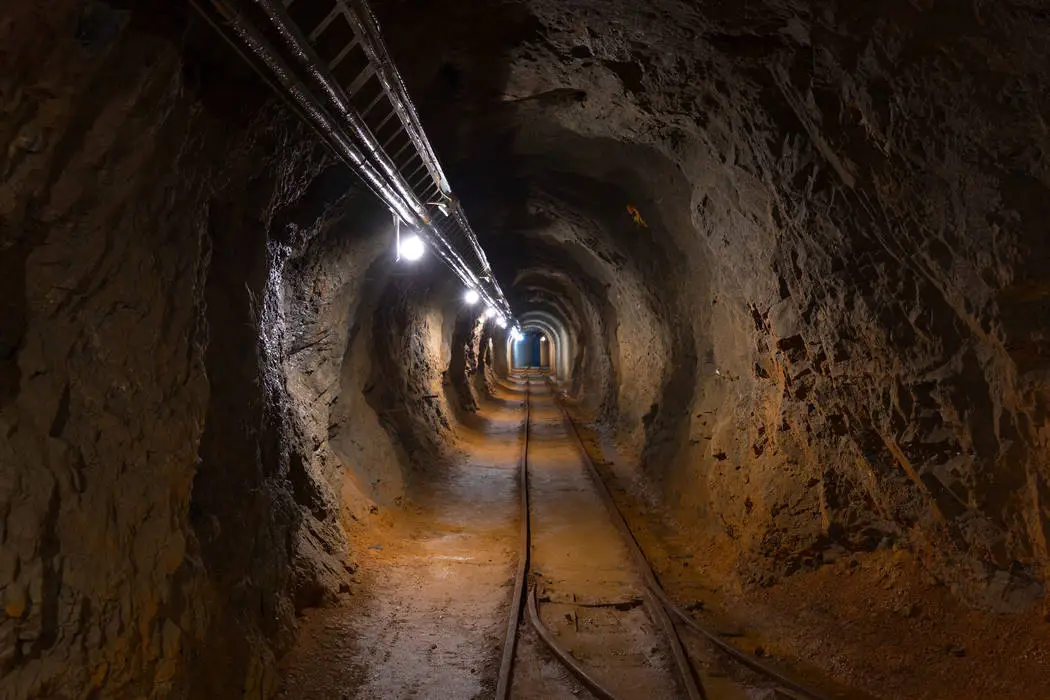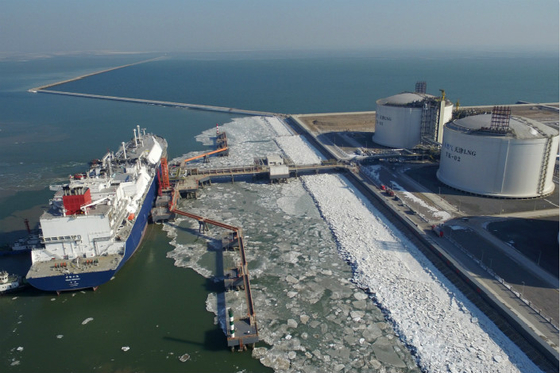RIO DE JANEIRO, BRAZIL – It wasn’t long ago that the newly appointed German EU Commission chief Ursula von der Leyen announced her “Green Deal for Europe.” The plan is to invest €1 trillion, or €1,000 billion (US$1.1 trillion), in the fight against climate change by 2030.
And she was frenetically celebrated for it because you may remember that this was the time when the “Greta disciples” were frantically protesting every Friday in Germany’s pedestrian zones against the alleged man-made climate change that is supposed to mean the end of the world in just ten years if we don’t give up fossil fuels very quickly and radically.
That was the dominant narrative of the left before Ukraine. Since then, however, everything has changed.
CLIMATE CHANGE AS A BUSINESS MODEL
It is disputed that climate change, which has undeniably existed since our home planet came into existence, is man-made.
What climate change propaganda certainly is, however, is a business model with which a lot of money can be made at the taxpayers’ expense; think of the €1 trillion that von der Leyen has promised for it. The money goes first and foremost to Bill Gates. And this is no joke, as you can read here.
Together with other oligarchs, Bill Gates and George Soros have set up an investment fund to invest in companies that earn money from the alleged fight against man-made climate change.
They have named the fund “Breakthrough Energy Venture,” and Ursula von der Leyen has made this fund the official partner of her “Green Deal for Europe”. A significant portion of that 1,000 billion is expected to go to Gates, Soros & friends.
PUTIN HAS ABOLISHED CLIMATE CHANGE
If von der Leyen and all the other European politicians believed in the story of man-made climate change and the world’s impending end, they would have to stick to the fossil fuel phase-out – Putin and Ukraine or not. But that is exactly what they are not doing.
Instead, the EU is increasingly relying on coal to replace the relatively clean Russian gas, which they want to get rid of very quickly to annoy the evil Putin. Annoying Putin is more important than climate protection and preventing the world’s end, which climate change is supposed to lead to soon.
Instead of reducing CO2 emissions, which will supposedly kill us all shortly if we don’t radically cut them back, the EU is doing the opposite and relying entirely on dirty energy sources; even lignite is experiencing a renaissance in the EU right now.
So we can note that Putin not only abolished Covid-19 when he intervened in Ukraine, but he also took the opportunity to abolish climate change. Putin has freed the world virtually overnight from the worst dangers that had kept us in suspense for the previous two years.
TURNING AWAY FROM RUSSIAN ENERGY LEADS TO GLOBAL WARMING
The European Union is embracing an embargo on Russian oil and gas. The price of this decision is the increase of harmful CO2 and methane emissions into the atmosphere.
The 27 member states of the European Union continue to work on the sixth package of anti-Russian sanctions. Following the April 7 ban on coal imports, the EU plans to cut off imports of Russian oil.
The Old World also hopes to do away with gas from Siberian fields by the middle of the decade. The official position of the Europeans is that renewable energy sources should replace hydrocarbons.
The reality is different. Greece is reverting to its particularly polluting form, lignite. The embargo on Russian coal increases the production of this fossil fuel in the EU. Even more dangerous for the environment is replacing pipeline gas produced in Yamal with American or Qatari liquefied gas.
The conversion from one state of aggregation to another is possible only with high energy input, which must be added to the cost of transportation to water. It has been calculated that transporting liquefied natural gas (LNG) in tankers causes 2.5 times more harmful air emissions than transporting it by pipeline, not to mention the environmental damage caused by shale gas extraction.

THE NOT-SO-GREEN EUROPE
Geopolitically, the changes are seen as replacing one energy dependence with another. Starting in February 2022, European countries will release funds to build more and more liquefied natural gas terminals to replace current pipeline deliveries.
Germany plans to invest €3 billion in groups of floating terminals. In contrast, Spain, which already has six terminals, plans to build a pipeline to bring liquefied natural gas through its pipelines to neighboring countries.
A similar infrastructure project has been agreed upon in northern Europe: A terminal for liquefied natural gas is to be built at the port of Paldiski in Estonia for delivery to Finland.
In the Balkans, Greece is taking a pioneering role: on May 3, it began construction of a terminal on the Aegean coast through which it plans to supply its neighbors, including non-EU members, with liquefied natural gas.
Environmentalists are not happy about this. To get the gas into the tanks, its temperature must be lowered to -160 degrees Celsius, reducing the cargo volume by a factor of 600. The conversion consumes a lot of energy and is also prone to leaks.
From the natural gas extraction to its delivery to the terminal, spontaneous methane emissions are released into the atmosphere. According to the Natural Resources Defense Council, LNG releases up to 6 percent of these harmful compounds into the air before the energy reaches consumers.
Even worse for the environment, the expected source of the LNG is fields in the United States. It’s not just the fact that the transportation route across the Atlantic is very long but also the nature of US gas reserves. In shale gas extraction, which was experimented with in the 2000s and 2010s, Americans extract oil and gas by breaking up the ground, which leads to water poisoning, and soil and air pollution with methane and ethane.
Or rather, not all do: shale gas extraction is banned in parts of the US. But there is not enough other gas in the US, and the gas from US states where the new extraction methods are legal will go to Europe in much larger quantities in the future.
IN THE ECONOMIC CRUSADE OF THE WEST, ALL MEANS ARE JUSTIFIED
European and American politicians, elected based on “green” promises, must explain this development to the voters. President Joe Biden, who promised not to issue new permits for oil and gas extraction, has become the world’s largest seller of shale products abroad in 2022.
In a meeting with Ursula von der Leyen, president of the European Commission, Biden promised to deliver an additional 15 billion cubic meters of gas to the Old World this year alone and up to 50 billion by the end of the decade.
That’s a 180-degree turnaround, considering Biden began his 2021 term by banning the Keystone pipeline between Canada and the US on environmental grounds alone.
The European Commission is also taking a similar path. In early February 2022, European leaders recognized natural gas as a “green energy source” after a lengthy debate. At the time, it was pipeline gas; today, liquefied natural gas by association is also considered “green,” although it is not the same thing.
There are talks between the Europeans and the Americans: the old world is waiting for offers from the US to reduce methane emissions in transportation. But the gas is already accepted, so improving the technology is reserved for the future.
That’s understandable, given the position of Frans Timmermans, the European Commission vice president in charge of the green transition, who at the same time approved another transition to coal, which the EU will use to replace Russian gas temporarily. “Under the circumstances [of the military operation in Ukraine], there are no taboos [even for coal],” Timmermans explains.

NO TABOO?
There is at least one constraint on European economies, albeit a legally binding one. The European climate law adopted in 2020 sets the roadmap for the future: it forces EU countries to reduce their emissions by 55% compared to 1990 levels, but with a timeframe of only eight years until 2030.
Combining this goal with waging an economic war against Russia is challenging. The countries that still have coal reserves have already used all the new anti-Russian sanctions to increase their production, in other words, to sabotage the law.
Poland is at the forefront of this. Poland is known for its mining tradition and only wanted to completely phase out coal in 2049. Today, that goal is seen as irrelevant. “We want coal-derived energy to continue to be consumed in Poland in the second half of this century,” Deputy Prime Minister Jacek Sasin said in April.
That was not encouraging to environmentalists: the coal industry is, on average, twice the size of the natural gas industry in terms of CO2 emissions. It would mean that Russia would sell coal destined for the EU on Asian markets, and Europeans would mine their coal instead of buying it, increasing pollution worldwide.
In the first months of 2022, the trend of returning coal has taken hold in the European Union. Greece has announced plans to resume mining lignite, a highly polluting type of coal.
Romania intends to restart coal-fired power plants, and Germany wants to extend the life of power plants that have not yet been shut down. Italy has agreed to resume coal-fired power plants that have already been shut down.
The growing interest in coal has driven up coal prices and challenged the impression that the world will close mines everywhere after the International Climate Forum in Glasgow in November 2021.
ONE STEP FORWARD, TWO STEPS BACK
In the European Union, waging an economic war against Russia by promoting dirty energy is described as a temporary measure. Greek Prime Minister Kyriakos Mitsotakis used the word “temporary” to explain to his constituents the need to restart coal-fired power plants.
And Italian Prime Minister Mario Draghi used the same word. Coal projects in Portugal, Romania, and the Czech Republic are described as temporary.
According to the official view of these countries, the foreseeable future is to bring progress in renewable energy to Europe. In time, they should replace polluting coal, making any purchase of hydrocarbons pointless.
But without further explanation, this prospect does not seem convincing. After all, if renewables were reliable, the Old World could have relied on them sooner. The fact is that the windless weather over the North Sea in the summer of 2021 caused considerable losses in renewables, immediately exacerbated dependence on gas, and triggered the energy crisis that is still ongoing.
How can we prevent the same scenario from happening again in the future? Coal projects and even dirty LNG from the US have been called temporary solutions, but nothing is more permanent than interim measures.

